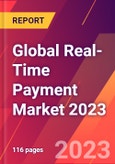Real-time payments market forecasted to witness double-digit CAGR between 2022 and 2028
Real-time payments are steadily gaining momentum as a preferred payment system
The outbreak of the pandemic led to a shift in the way consumers and businesses globally made payments, thereby increasing the dependence on newer payment methods such as BNPL, one-click payments as well as real-time payments. Real-time payment systems offer benefits in terms of cost reductions and payment success rates to consumers and businesses alike. Thus, the market size of real-time payments is forecasted to see a double-digit CAGR from 2022 through 2028, with the value reaching billions of euros by 2028, as spelt out by this report. Large firms are also modernizing their payment ecosystem to further streamline instant transfers, thus as of July 2022, close to three-quarters of firms globally using real-time payment system regarded their capabilities as highly important. The introduction of Zengin in Japan prompted other countries globally, especially India, Brazil, Singapore, Thailand, Australia, and the UK among others to implement their own instant payment systems. While UPI in India and PIX in Brazil are the frontrunners in the usage of instant payment systems, countries in other regions such as MENA, Africa, and Latin America are also catching up. For instance, in Australia, the New Payments Platform (NPP) has had more than a billion transfers representing a value of trillions of euros since its launch. Likewise, PromptPay, the real-time payments system in Thailand saw a value of transactions amounting to certain billion euros as of October 2022, according to data cited in the latest report. Unlike other nations where real-time payment solutions emerged due to the collective efforts of the government and the central bank, Colombia’s real-time payment system, Transfiya developed as a result of private arrangements to support the country’s financial inclusion goals and has seen constant growth since its launch. Furthermore, CliQ in Jordan, Fawri+ in Bahrain, and GhIPSS Instant Pay, in Ghana are some other instant payment systems worldwide that are seeing growth in adoption and usage.
Despite slow growth of the real-time payment infrastructure in Europe, countries in the region are taking steps to encourage usage and adoption
The payment landscape in Europe changed with the launch of SEPA in 2008, which led to the smooth functioning of credit transfers as well as a direct debit in the EU. To encourage the growth of alternative payment methods such as real-time payments, the ECB launched the TARGET Instant Payment Settlement Scheme and later the SEPA Instant. However, the adoption and usage of SEPA Instant in Europe varied across nations. For instance, Luxembourg, Malta, and Italy were the top 3 nations in Europe with the highest share of respondents claiming access to SEPA Instant, and Greece has the lowest share of respondents having access to the system, as per this new report. Germany, on the other hand, had the highest number of participants in both SEPA and SEPA Instant and the number of real-time payment transfers is forecasted to grow at a double-digit CAGR between 2021 and 2026, reaching a number in billions as of 2026. To encourage the growth of SEPA Instant, banks offering SEPA will also be obliged to provide SEPA Instant services in Europe. Additionally, in countries such as Netherlands, the share of real-time payment transactions in terms of volume is forecasted to witness a rise of several percentage points by 2026. The real-time payment system of Russia, SBP, also showed constant progress in the volume and value of transactions from Q1 2021 to Q2 2022, according to the publication.
Questions Covered
1. What is the forecasted total value of real-time payments globally by 2028?
2. What is the forecasted number of transfers via real-time payments in India as of 2026?
3. What were top advantages of real-time payments in the U.S. as of June 2022?
4. Which were the top 3 countries in Europe with the highest share of respondents to whom SEPA instant was available as of June 2022?
5. What is the forecasted share of real-time payments in terms of value in Brazil by 2026?
Table of Contents
1. Management Summary
Companies Mentioned (Partial List)
A selection of companies mentioned in this report includes, but is not limited to:
- Cobro Digital (CoDi)
- Dana
- DuitNow
- InstaPay
- JoPACC
- JustPay
- LankaPay
- Line Pay
- LinkAja
- Ottocash
- PayNet
- PayNow
- PayShap
- PayTo
- PIX
- PLIN
- PromptPay
- ShopeePay
- Yape
- Zengin








